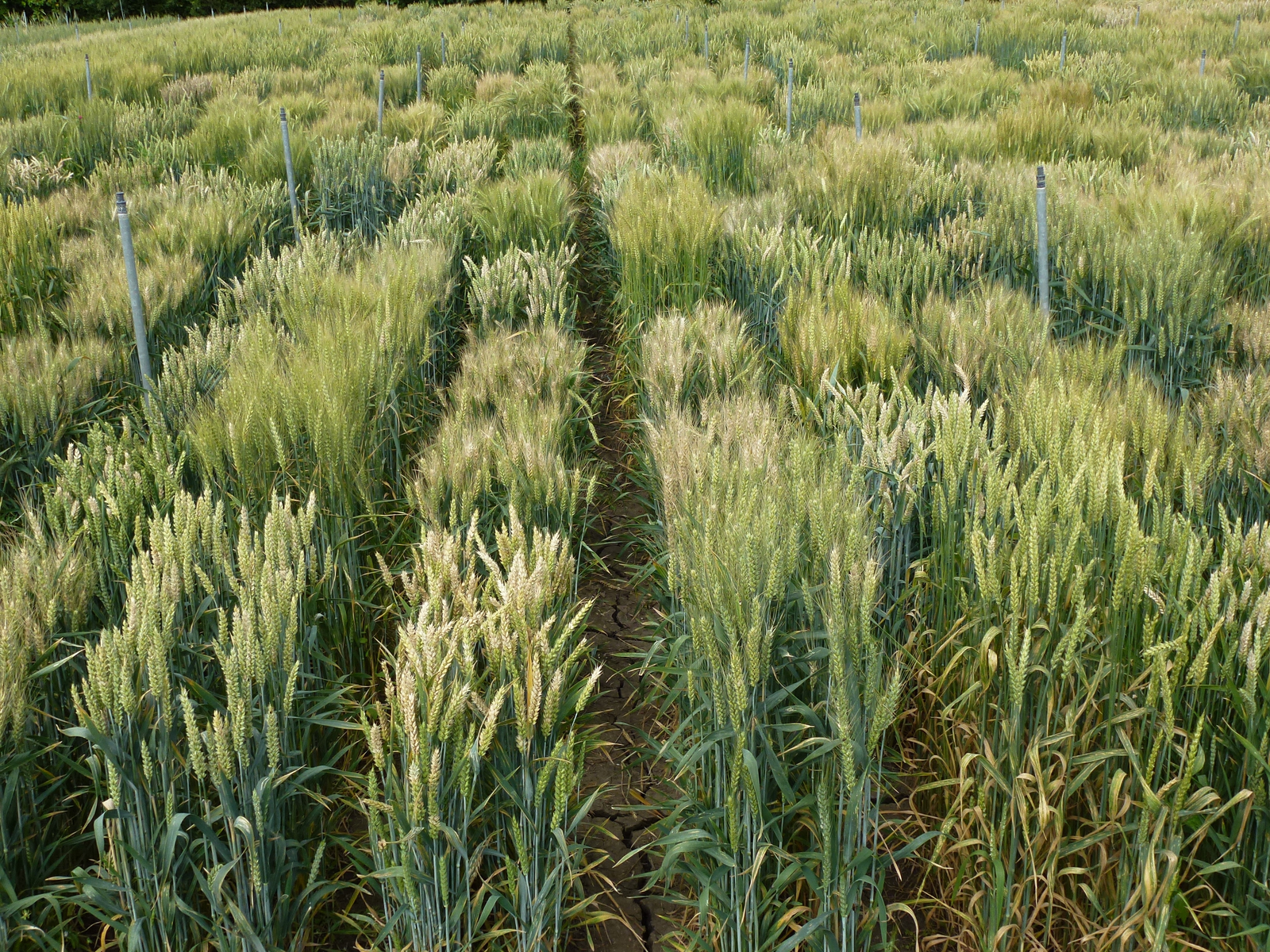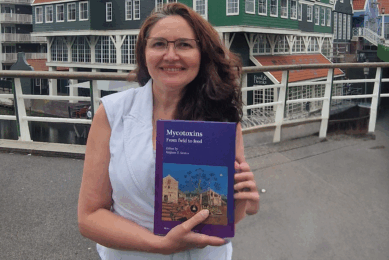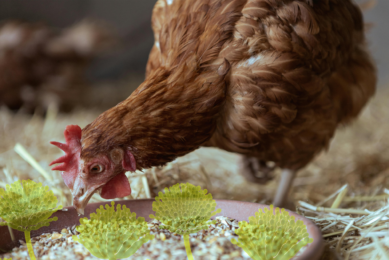Breeding for mycotoxin resistant crops

Plant breeding has brought farmers already many improvements and already, numerous cultivars, breeding lines and other genetic resources have been described for their good to excellent resistance to Fusarium head blight. But it all starts with a thorough phenotypic evaluation of new breeding lines.
By Hermann Buerstmayr, University of Natural Resources and Life Sciences, Vienna, Austria
A survey conducted amongst breeders during the International Wheat Genetics Symposium (Sept. 2013, Yokohama, Japan) revealed that resistance to Fusarium diseases is considered a very high priority in almost all wheat growing regions. The major problem being Fusarium head blight (FHB) which, apart from yield losses, frequently leads to contaminations of the harvest with Fusarium mycotoxins. A range of Fusarium toxins have been implicated with the disease, which have been described in detail elsewhere. Consequently, many research programmes have been established to understand this disease and the resistance response of the host plants and numerous breeders included selection for Fusarium resistance in their breeding programmes. The majority of the Fusarium infections and concomitant toxin contaminations happen at the very beginning of the cereal production chain: on the farmer’s fields, and should therefore be controlled as efficiently as possible at this critical stage. Prevention of FHB and mycotoxin contamination in the crop requires integrated approaches, where agronomical practice, fungicide or biocontrol application and cultivar choice play their roles, among which cropping of resistant cultivars is possibly the single most efficient measure a farmer has at his disposal.
Cultivar resistance
A large survey was conducted in France in the scope of the Qualimètre project in which 12,700 field plots were evaluated in 2012: soft wheat cultivated with maize as previous crop, which increases the Fusarium disease pressure, was used to establish a deoxynivalenol (DON) prediction model. Applying this model to the weather data around wheat flowering from 2003 to 2012 showed that choosing a FHB resistant cultivar was highly efficient to control the DON contamination in wheat below the regulatory limit which was set to 1250 µg/kg in the European Union (for unprocessed wheat). This was the case even in epidemic seasons when susceptible cultivars surpassed this critical threshold (Figure 1). Extensive studies conducted at multiple locations and years in the United States comparing cultivar resistance and fungicide application illustrated that planting resistant cultivars together with appropriate fungicide treatment results in most stable FHB and DON control (Willyerd et al. 2012). Ransom (2012) pointed out that in multi-season field experiments in North Dakota, cultivar resistance was more efficient for controlling Fusarium damage and DON content than fungicide treatment.
Breeding for FHB resistance
Obviously, there is an ongoing need to supply farmers with regionally adapted crop cultivars that combine high and stable yield performance, the necessary quality requirements and adequate resistance to the prevailing pests and diseases, including resistance to toxigenic Fusarium species. The backbone of breeding cultivars with a low risk of becoming contaminated with critical amounts of mycotoxins even under epidemic conditions is breeding for resistance to Fusarium head blight. Breeding for FHB resistance, as for any character any new cultivar should possess, relies on two basic pre-conditions:
(1) availability of genetic variation for the characters of interest and
(2) availability of selection tools that allow the breeder to discriminate desired from non-desired genotypes.
Fortunately in the gene pool of bread wheat genetic variation for FHB resistance is large: numerous cultivars, breeding lines and other genetic resources have been described for their good to excellent FHB resistance. Sources of resistance are therefore available and are being used in breeding programmes. Many breeders nowadays plan most of their new crosses with one or both parents contributing to FHB resistance, or at least avoiding crossings between two susceptible parental lines. Only moderately FHB resistant sources are available in the adapted gene-pool for instance in European winter wheat. Using the regionally adapted germplasm in breeding is straight-forward, however currently the ‘best’ resistant European cultivars lines show only a moderate degree of resistance. On the contrary, possibly the highest level of FHB resistance has been discovered in germplasm which is rather ‘exotic’ from a European point of view, namely spring wheat cultivars from Asia, such as the Chinese cultivar Sumai-3 and its relatives. The problem with using exotic parents is that these lines do not only possess desired resistance alleles, but also (too many) undesired alleles, which render these lines useless as cultivars for crop production in Europe. From a breeding perspective such germplasm may still be very interesting as crossing parents for breeding new cultivars. Utilisation of such exotic parents in breeding is feasible, but requires long-term planning and needs usually several rounds of crossing and selection in order to incorporate the desired resistance trait into locally adapted and productive cultivars. A breeding cycle from making a new cross until selecting and finally registering and marketing a new cultivar requires at least one decade, or even longer particularly when using exotic parental lines in crossing. With such exotics one or a few rounds of pre-breeding need to be performed in order to step-by-step bring the desired alleles into regionally adapted cultivars.
Finding the best new cultivars
The backbone of selection of improved lines, even in the era of genomics, is based on thorough phenotypic evaluation of new breeding lines. This involves replicated trials, mainly field trials, of many (100s to 1000s) cultivar candidates under conditions that reflect the environmental and crop management conditions to which a new cultivar is likely exposed to on the farmer’s fields. Performing such trails is logistically and financially demanding, breeding one new cultivar of e.g. winter wheat requires an investment of up to €1 million. Selection for improved FHB resistance is often practiced in specific disease provocation nurseries, involving artificial inoculations. Undoubtedly the most important goal is the identification of cultivars with low toxin load despite high disease pressure. There are two facts that allow the breeder to achieve this goal with reasonable input:
(1) visual symptom severity correlates well with mycotoxin content in the harvested grains; (2) resistance to Fusarium head blight caused by different Fusarium species, which produce their own specific toxin profiles is, in most cases, highly correlated. These facts allow the breeder to simplify the selection approach: (1) Selection based on symptom severity is relatively quick and cheap, it is usually performed by experienced breeders in estimating symptom severity directly at field grown plants. Such field observations are routinely assessed for several diseases and other plant traits. The need to harvest all field samples and analyse all samples for toxin content, which would be a significant cost factor, is therefore not required. Only the ‘best and most promising’ new lines should be assessed also for toxin contamination. (2) Selection for resistance against the relatively easier to test Fusarium species (e.g. F. graminearum, F. culmorum) leads to a correlated selection response in resistance to more difficult to test species (e.g. F. sporotrichioides, F. avenaceum). This fact simplifies resistance breeding significantly.
Genomics assisted breeding
Molecular genetic and genomic tools have found their way into plant breeding research over the last 30 years, and have been implemented in practical plant breeding to varying degrees. For FHB resistance in wheat numerous genetic studies have been performed: in the ISI Web of Science 347 publications match the search string: (Fusarium head blight) AND (wheat or Triticum) AND (resistance) AND (marker or QTL).
Numerous QTL (quantitative trait loci) have been discovered and several of these are being applied in breeding. Possibly the most prominent FHB resistance QTL, that is extensively used in breeding is Fhb1, also known as the Fhb1 resistance gene, located at wheat chromosome arm 3BS. Marker assisted selection using genetic markers that predict presence of the desired allele allow selection without the need to perform elaborate resistance evaluations.
Several breeding programmes have therefore implemented marker assisted breeding and successfully developed FHB resistant cultivars using this approach.
Sustainable reduction
All in all plant breeding has made significant progress in supplying farmers with FHB resistant cultivars and will continue to do so. Choosing resistant cultivars is possibly the best option for mycotoxin reduction right at the beginning of the cereal production chain. Resources that are invested in breeding are an excellent, but long term investment.
Therefore, more investment into breeding would result in sustainable reduction of the mycotoxin problems in the cereal production chain.
[Source: Managing mycotoxins, 2014]
Hermann Buerstmayr will be speaking at the World Mycotoxin Forum on Tuesday, November 11, session6: 13.30h.











